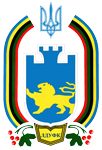Будь ласка, використовуйте цей ідентифікатор, щоб цитувати або посилатися на цей матеріал:
https://repository.ldufk.edu.ua/handle/34606048/34293| Назва: | Geographic assessment of obstacles on European rivers for water sports tourism |
| Інші назви: | Географічна оцінка перешкод річок Європи для водного спортивного туризму |
| Автори: | Kolotukha, Oleksandr Myrgorodska, Olena Kozynska, Iryna Bozhuk, Tetiana Божук, Тетяна |
| Ключові слова: | adventure tourism sports tourism water tourism complexity of water obstacles water obstacles пригодницький туризм спортивний туризм складність водних перешкод водний туризм водні перешкоди |
| Дата публікації: | 16-чер-2023 |
| Бібліографічний опис: | Geographic assessment of obstacles on European rivers for water sports tourism / Oleksandr Kolotukha, Olena Myrgorodska, Iryna Kozynska, Tetiana Bozhuk // Journal of Geology, Geography and Geoecology. – 2023. – N 32(2). – P. 295–309. doi:10.15421/112328 (Web of Science) |
| Серія/номер: | Наукові праці професорсько-викладацького складу ЛДУФК імені Івана Боберського в базах даних Scopus та WoS; |
| Короткий огляд (реферат): | Experts predict that the global market of water sports tourism is expected to reach almost $ 850 billion by 2032, with an average annual growth of almost 17% over the next 10 years. At the moment, not a single segment of the world tourism has such a high growth rate. At the same time, we should not forget that water tourism is one of the most technically complex sports. If in other types a tourist can stop on almost any difficult part of the route in order to recuperate, find the best solution, the fast water flow does not allow this. The guarantee of correct actions can be given only by the worked out reaction of each tourist individually and the crew of the tourist vessel as a whole. Therefore, the purpose of the research is professional, incl., assessment of water obstacles, which is extremely important for the safety of tourist sports trips, that are often carried out on the verge of the physical and technical geographical capabilities of their participants. The goal was achieved through the use of such scientific research methods as analytical-statistical, com- parative-geographical, reference and field expeditionary research. The authors have established that water tourism is a rafting of tourists in water areas on various means of rafting – inflatable boats (rafts), kayaks, catamarans, canoes and others with overcoming various obstacles on the water relief – rapids, riffles, river bars and boils, and even waterfalls of different heights. The nature, number and variety of water obstacles determine the technical complexity of the water tourist route. Therefore, the task of scientists is to develop criteria for assessing the complexity of water obstacles so that tourists-athletes, when overcoming them, can compare their tourist experience, technical capabilities of their vessel in order to decide whether they can safely overcome a particular obstacle (go through the route). The authors analyzed a number of classifications for determining the complexity of water obstacles – International, American, S. Chernik’s classification. These classifications differ in the initial categories of complexity assessment of water obstacles and are close enough when assessing more complex obstacles from category IV to VI of complexity. The analysis showed that the international classification is best used in assessing the complexity of local water obstacles (rapids). Instead, either the American classification or the S. Chernik’s classifi- cation should be used to assess long water sports routes. Europe has a fairly dense river system and a significant number of rivers suitable for water tourist trips. The maximum category of complexity of European rivers is the sixth (according to any of the classifications). Such level of complexity can be found on the rivers of the Scandinavian Peninsula, the Balkan Peninsula, and the North Caucasus. The potential for the development of water sports tourism is not evenly distributed between European countries. A special place in this regard is occupied by the countries of the Balkan Peninsula, since rivers of all categories of complexity are represented here – from the easiest to the most complex. For tourists-athletes of high qualification, the Scandinavian Peninsula rivers can serve as a training ground. В статті виконано загальну фахову та географічну оцінку перешкод, які зустрічаються на річках Європи, для потреб водного спортивного туризму. Визначено, що водний туризм – це сплав туристів-спортсменів водними акваторіями на манітних засобах сплаву – рафтах, байдарках, катамаранах, каяках тощо з подоланням перешкод водного рельєфу – порогів, шивер, перекатів, притисків і, навіть, водоспадів різної висоти. При цьому, характер, кількість та різноманітність таких перешкод визначають технічну складність водного туристського маршруту. Також слід враховувати, що водний туризм залишається одним із найбільш технічно складних видів спорту. Тому метою дослідження є фахова, в т.ч. географічна, оцінка водних перешкод, яка має надзвичайно велике значення для безпеки туристських спортивних походів, які часто здійснюються на межі фізичних та технічних можливостей їх учасників. Проаналізовано ряд класифікацій визначення складності водних перешкод – міжнародну, американську, класифікацію С. Черніка. З’ясовано, що класифікації різняться на початкових категоріях оцінки водних перешкод та є достатньо близькими при оцінці більш складних перешкод від ІV до VІ категорії складності. Виявлено, що міжнародну кла- сифікацію краще застосовувати при оцінці складності локальних водних перешкод (порогів). Натомість, для оцінки протяжних водних спортивних маршрутів слід застосовувати або американську класифікацію, або класифікацію С. Черніка. Встановлено, що Європа має густу річкову систему та значну кількість річок, придатних для проведення водних туристських походів. Мак- симальна категорія складності річок Європи – найвища шоста (за будь-якою з класифікацій). Таку категорію складності мають річки Скандинавського півострова, Балканського півострова. Між країнами Європи потенціал для розвитку водного спортивного туризму розподіляється не рівномірно. Особливе місце у цьому відношенні посідають країни Балканського півострова, оскільки тут представлені річки всіх категорій складності – від простих до найскладніших. Для туристів-спортсменів високої кваліфікації полігоном можуть слугувати річки Скандинавського півострова. |
| URI (Уніфікований ідентифікатор ресурсу): | https://repository.ldufk.edu.ua/handle/34606048/34293 |
| Розташовується у зібраннях: | Наукові праці професорсько-викладацького складу ЛДУФК в базах даних Scopus, WoS, Tomson Reuters |
Файли цього матеріалу:
| Файл | Опис | Розмір | Формат | |
|---|---|---|---|---|
| document.pdf | 759.44 kB | Adobe PDF | Переглянути/Відкрити |
Усі матеріали в архіві електронних ресурсів захищені авторським правом, всі права збережені.
